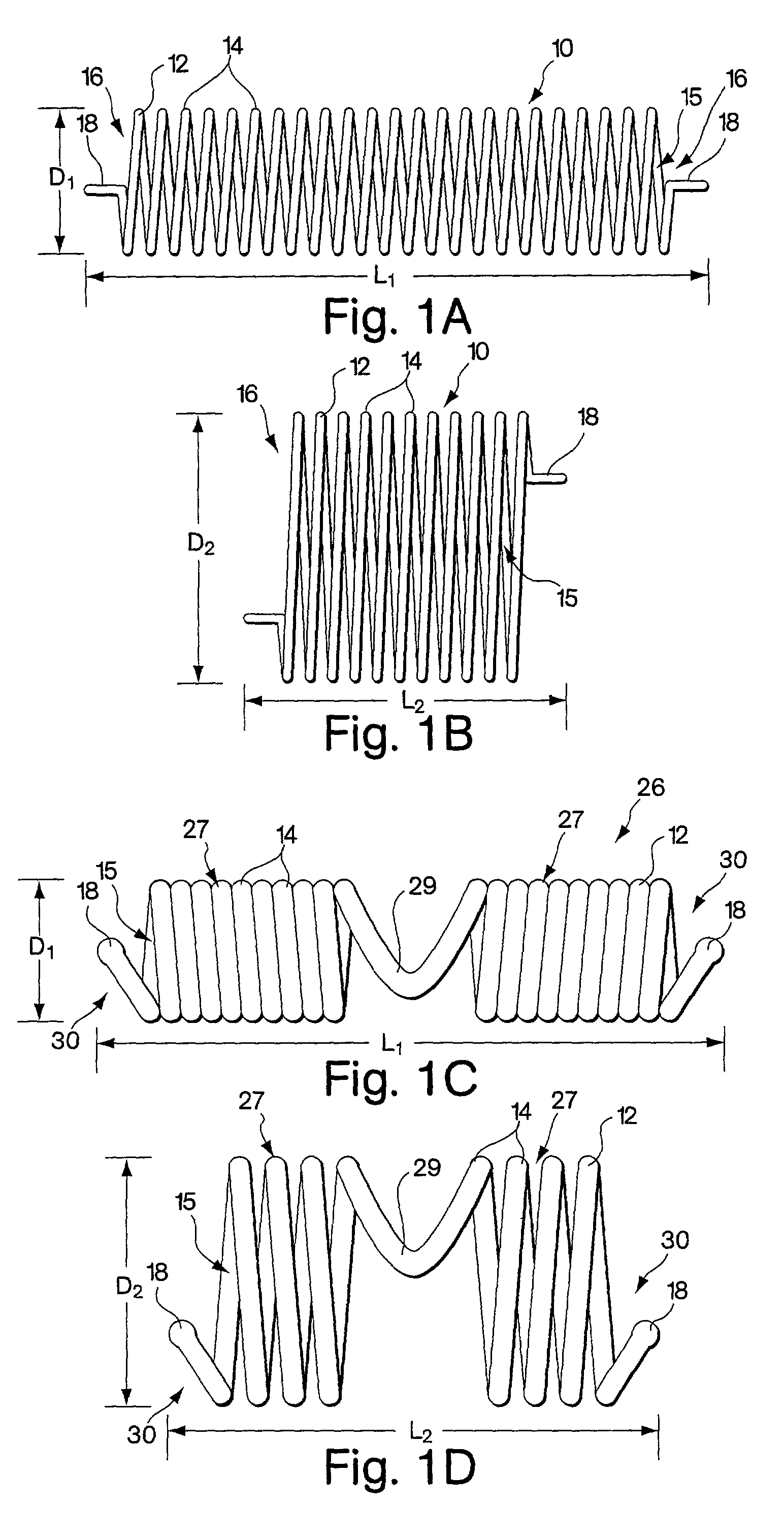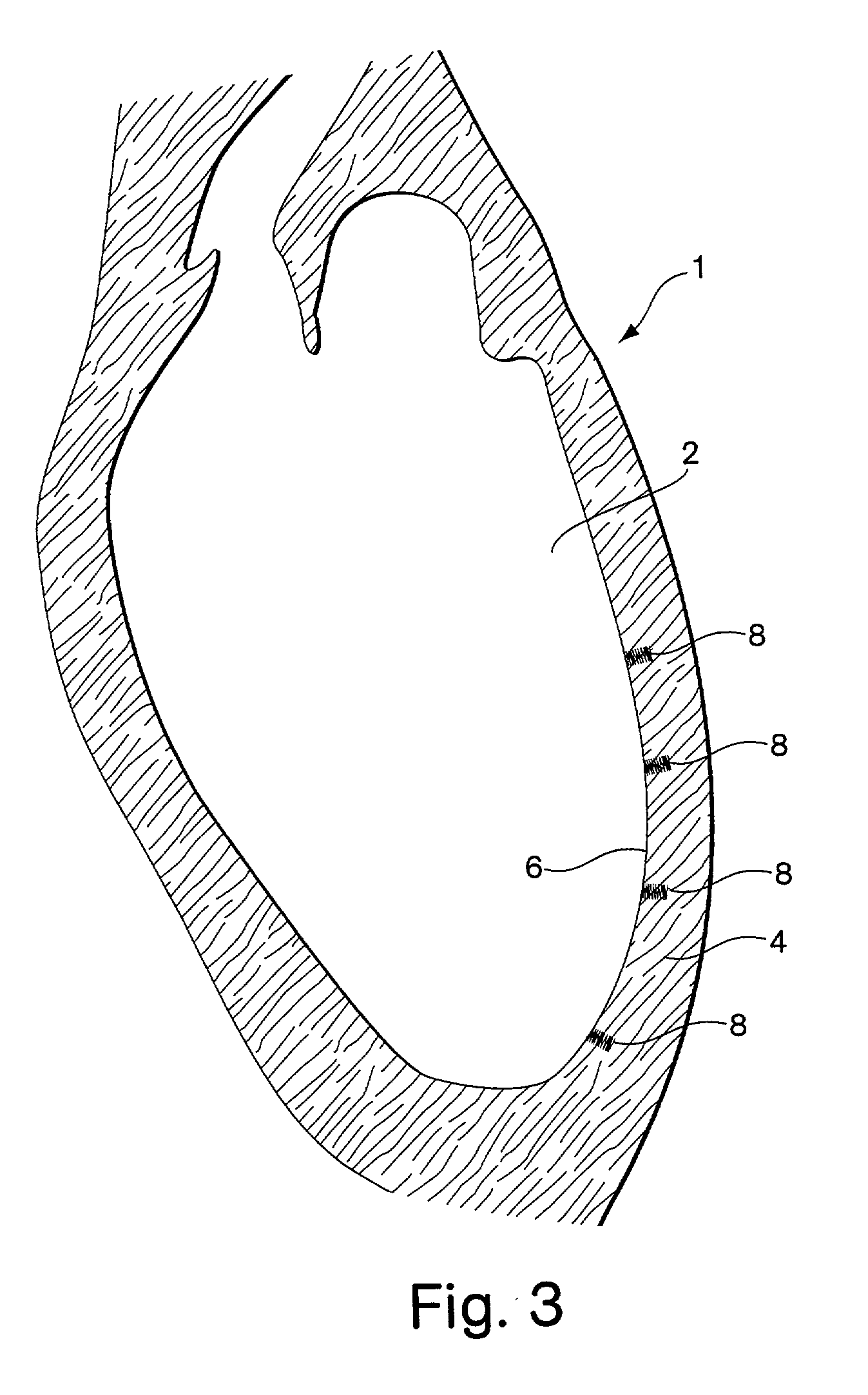Vascular inducing implants
a technology of inducing implants and vascular incisions, applied in the field of vascular inducing implants, can solve the problems of pain in the area of the affected tissue, pain to the individual affected, and muscle function interruption,
- Summary
- Abstract
- Description
- Claims
- Application Information
AI Technical Summary
Benefits of technology
Problems solved by technology
Method used
Image
Examples
Embodiment Construction
[0092] FIGS. 1A and 1B show a first embodiment of the implant comprising a helical coil spring 10. The spring is formed from a filament 12 of flexible material such as stainless steel or other metal or high density polymer. The filament is helically wrapped to form several individual coils 14 that comprise a spring having an interior 15. At each end 16 of the spring, the filament 12 terminates with a small tab 18 extending in a plane parallel to the axis of the implant. The tabs 18 are used for maintaining the implant upon the delivery device as will be described in further detail below. FIGS. 1C and 1D show an alternative spring implant embodiment 26 comprised of two segments 27 that are wound in opposite directions and joined together by a bridge 29. Each segment has a free end 30 in which the filament 12 terminates in a bulbous tab 18.
[0093] The spring implant embodiments are easily arranged from a first configuration to a second configuration, where the second configuration of t...
PUM
 Login to View More
Login to View More Abstract
Description
Claims
Application Information
 Login to View More
Login to View More - R&D
- Intellectual Property
- Life Sciences
- Materials
- Tech Scout
- Unparalleled Data Quality
- Higher Quality Content
- 60% Fewer Hallucinations
Browse by: Latest US Patents, China's latest patents, Technical Efficacy Thesaurus, Application Domain, Technology Topic, Popular Technical Reports.
© 2025 PatSnap. All rights reserved.Legal|Privacy policy|Modern Slavery Act Transparency Statement|Sitemap|About US| Contact US: help@patsnap.com



